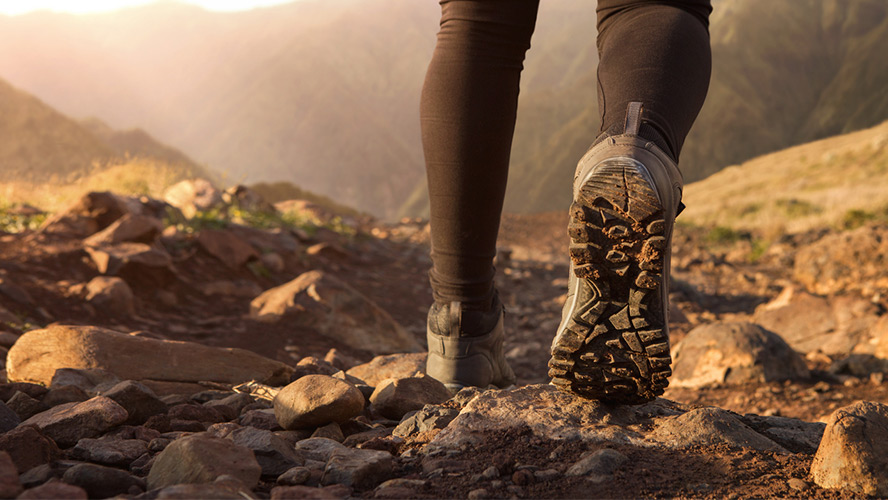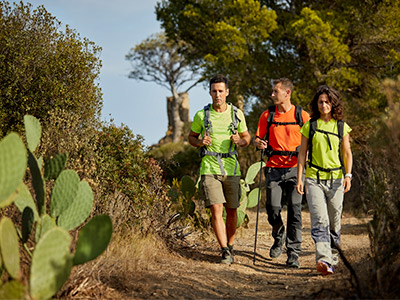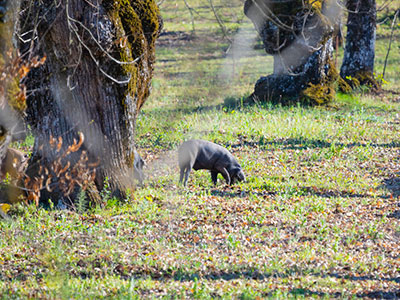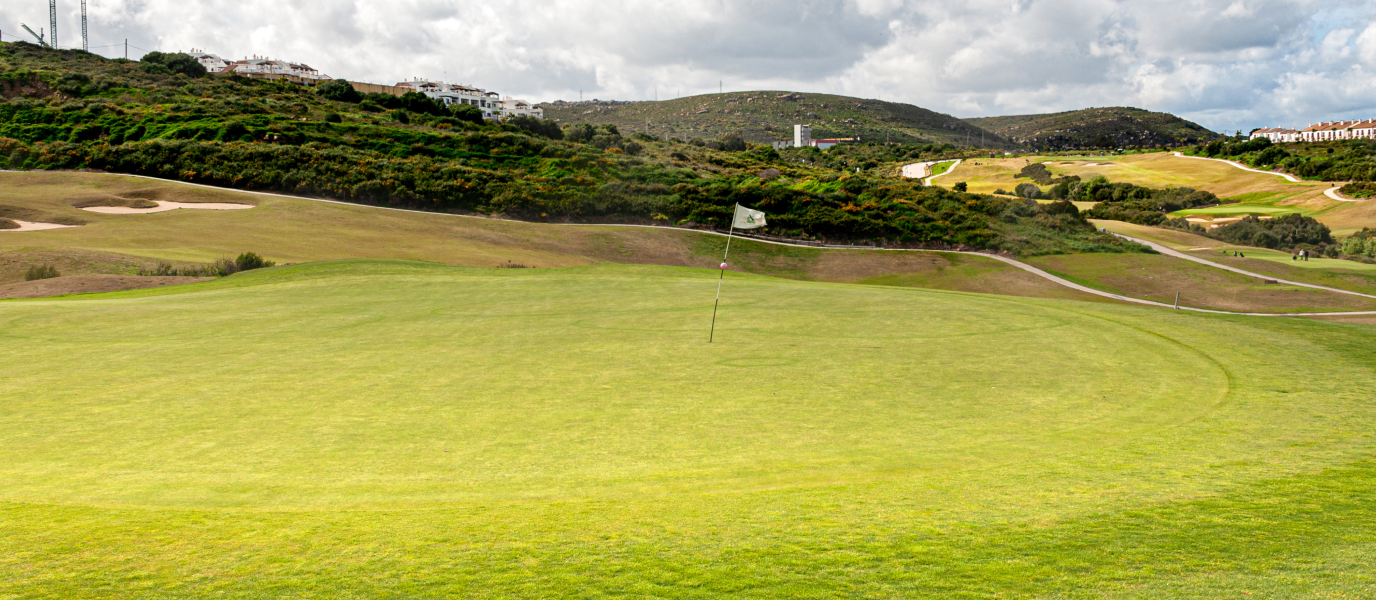Sendero del Río Piedras, Camino del Bujo, Sendero del Charco Malo, Senda del Camaleón… These are just some of the hiking trails scattered across the outskirts of Huelva’s towns and villages.
Around half of Huelva’s 55 hiking routes go through the Parque Natural de la Sierra de Aracena y los Picos de Aroche. This Natural Park is one of the largest hiking havens in all of Andalusia. Huelva’s rural landscape bears the marks of past industry, including grain mills from another era, ancient loading platforms or abandoned open-cast mines. Whether you’re in Huelva alone, with a partner or with kids, a hiking trip makes for a healthy and fun alternative to beach life. Got your walking boots ready?
Huelva’s best hiking routes
Sendero del Río Piedras
The River Piedras Trail is an easy 5-kilometre circular route which can be completed at a leisurely pace in around 1.5 h. It takes you into the Paraje Natural Marismas del Río Piedras y Flecha del Rompido, a fascinating protected areaof coastal ecosystems and wetlands. To get there from Huelva, first take the A-497 and then join the A-5051 minor road in direction El Rompido.
The starting point is in the small town of El Rompido, some 23 km from the city of Huelva, which has its own port and lighthouse. From there, a sand track takes you into the park past lagoons, marshes and pine forest. The pretty wooden walkways and the ancient salt mines (now fish farms) add an air of adventure that will keep the kids amused. You’ll get an education too – stop and read the information panels about local aquaculture and species found in the area.

Camino del Bujo
Just on the border separating Huelva from Extremadura is the village of Arroyomolinos de León, the ideal starting point for climbing the hill called the Alto del Bujo. The 8.5-km trail has two distinctly different sections. The first is a meadow landscape with holm oak and traditional stone walls marking the way. Along the second and slightly higher section, the holm oak give way to a variety of bushes and shrubs. The route ends at the Alto del Bujo viewpointwhere you’ll find fountains, tables and BBQs as well as unbeatable views over the nearby Parque Natural de la Sierra de Aracena y Picos de Aroche.
Ruta de los Molinos de agua del río Odiel
The Water Mills of the River Odiel Trail takes you inland to the municipality of Sotiel Coronada, a small rural settlement and the site of the Ermita de Nuestra Señora de España. Legend says that this chapel houses the remains of Ruderic, the last Visigothic King. From here you can pick up an easy trail of between 9 and 15 km (vary the distance as you wish) alongside the twists and turns of the Odiel, past ancient grain mills that lie abandoned on its banks. They’re a historical reminder of how the former inhabitants of the region harnessed the power of the river to grind wheat and other cereals. The remains of old mining operations still tinge the waters of the Odiel with ochre and green hues.
San Cristóbal hill from Almonaster la Real

This 6-kilometre, medium difficulty route takes you to the top of San Cristóbal, another of the hills crowning the Natural Park. The starting point is the small town of Almonaster la Real. It has a population of less than 2,000 and is famous for its 10th-century mosque and medicinal spa waters. The upward climb between traditional stone walls goes past yet more water mills and shows you some of the most typical plant species of the area, including holm oak, cork oak and chestnut. The summit is one of the best birdwatching spots in the province of Huelva – migrant birds frequently pass through the area.
Vía Verde del Odiel
The 17-kilometreOdiel Green Way is graded medium difficulty and is one of the most famous hiking routes in Huelva. Starting in Zalamea la Real, it follows an old mining railway past several abandoned loading platforms. This relatively flat sand track is suitable for both walkers and cyclists.
Dólmenes de El Pozuelo
Lastly, the municipality of Zalamea la Real is the home of a trail leading to a collection of 16 megalithic dolmens and burial chambers just a stone’s throw from the village of El Pozuelo. Over time, these gigantic stone structures have become milestones along the trail. You can vary the distance you want to cover as you wish, and the terrain isn’t too challenging, making it ideal for kids. In short, it’s a great opportunity to connect with Huelva’s history and the people who inhabited these lands more than 3,000 years ago.
Hiking in the Parque Natural de Sierra de Aracena y Picos de Aroche

We could dedicate an entire chapter to this natural park. It was declared a protected area in 1989 and it has one of the largest trail networks in Andalusia – a whopping 600 km of trails to be exact. Aroche, Linares de la Sierra, Alájar, Zufre, Valdelarco and Hinojales are just some of the mountain villages you’ll come across, each the starting point for several walking and cycling routes. Two trails in particular are popular locally:
- The 18-kilometre route connecting Fuenteheridos, Galaroza and Castaño del Robledo.
- The 30-kilometre circular route through Aroche and El Mustio. Make sure to check out Turóbriga, near Aroche. It was the only Roman settlement in Huelva and it’s well worth taking a look either at the start or end of your hike.






































































